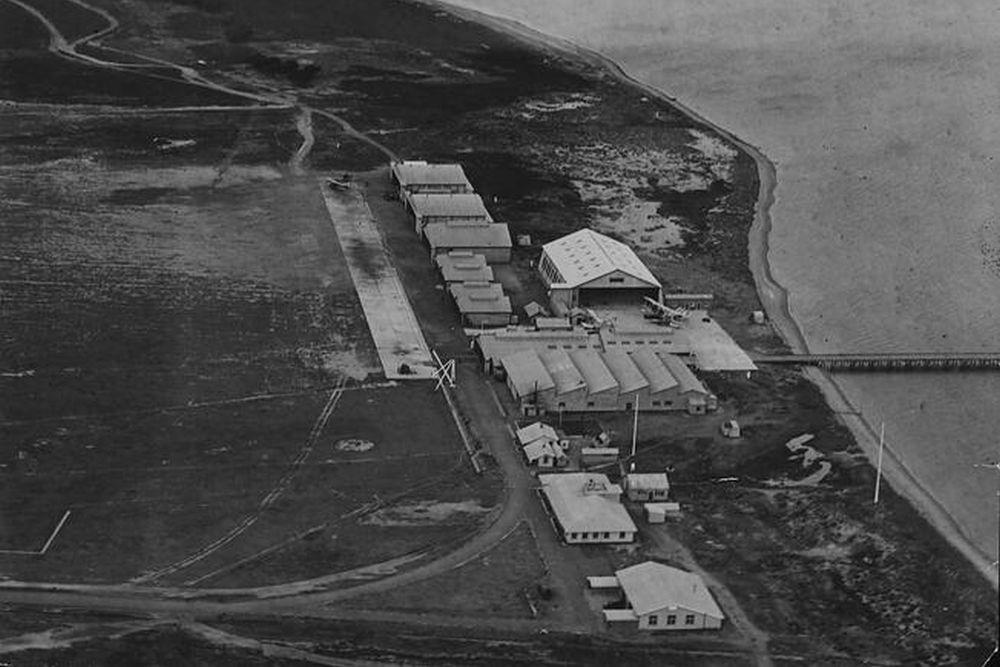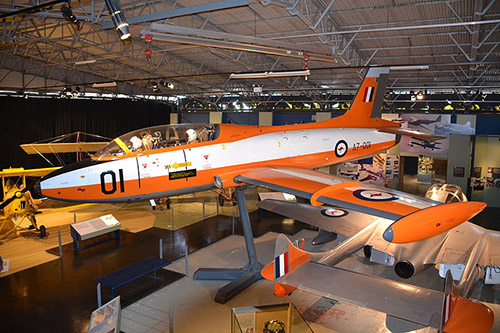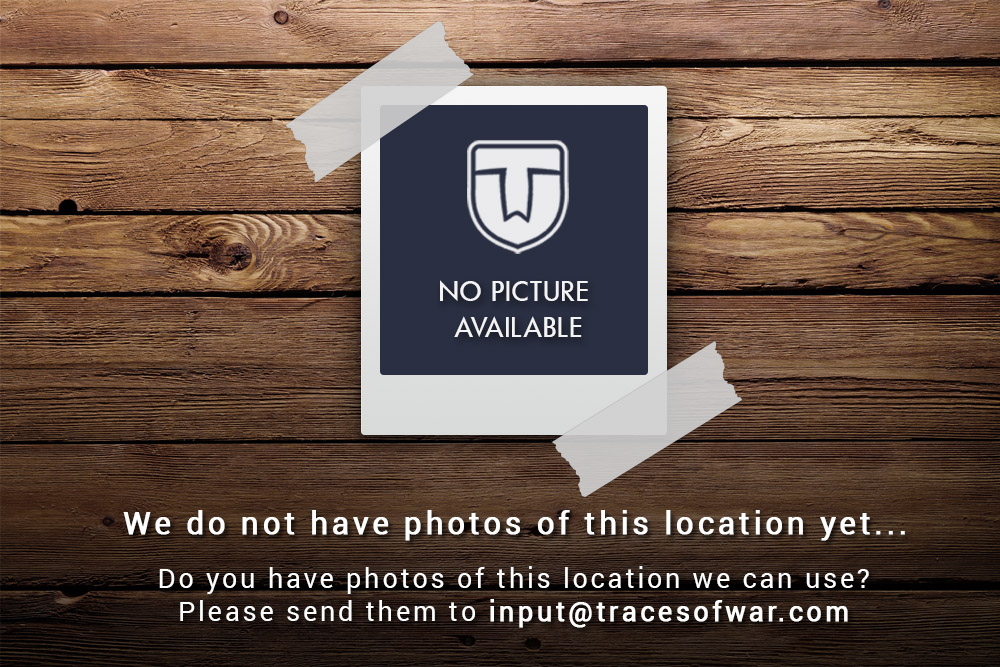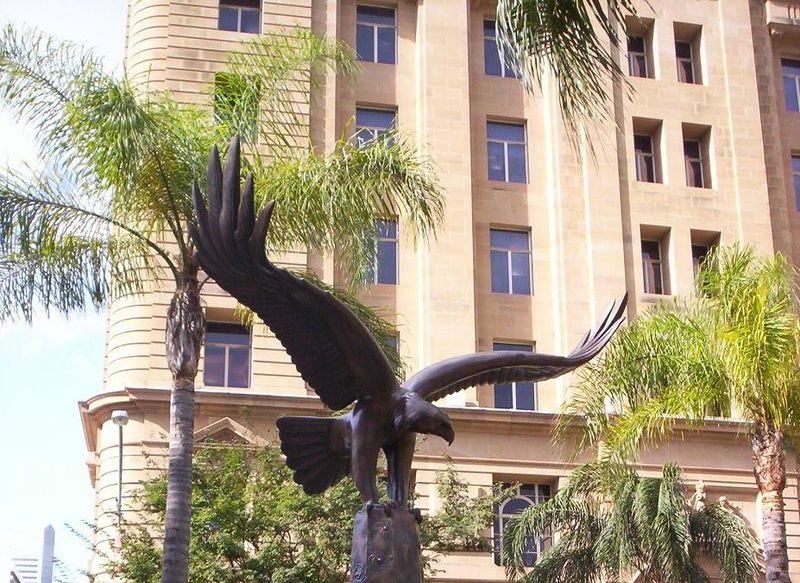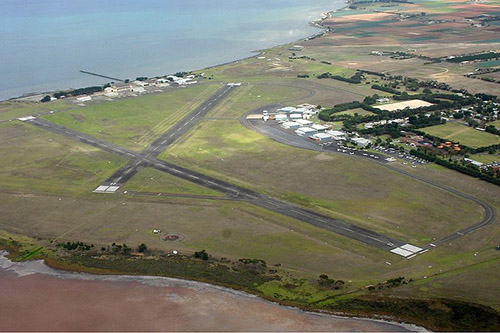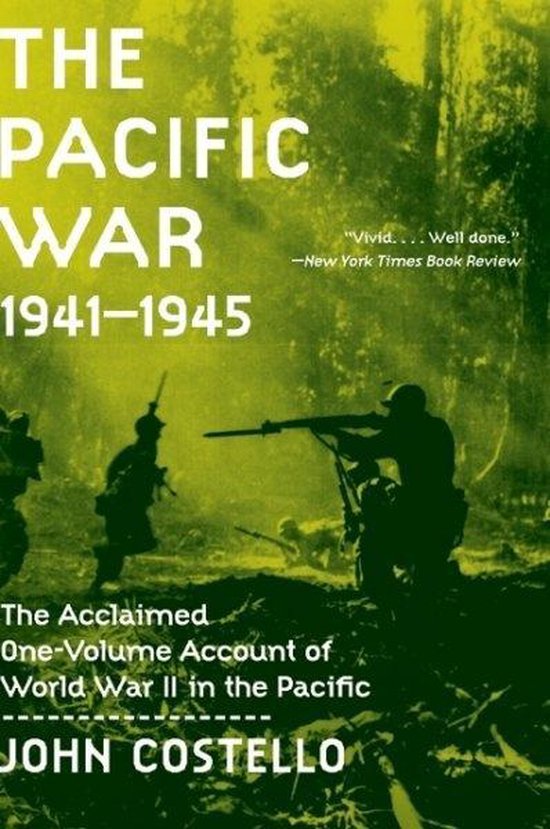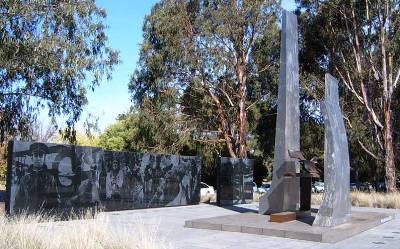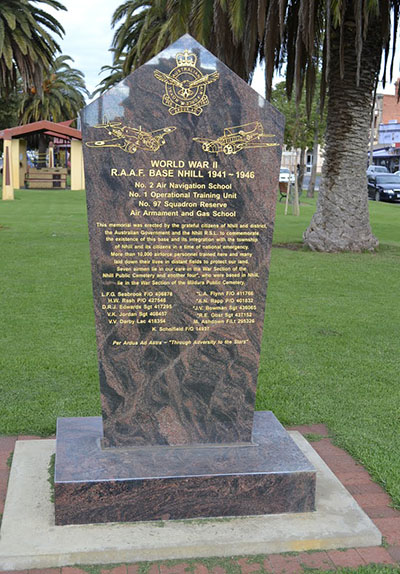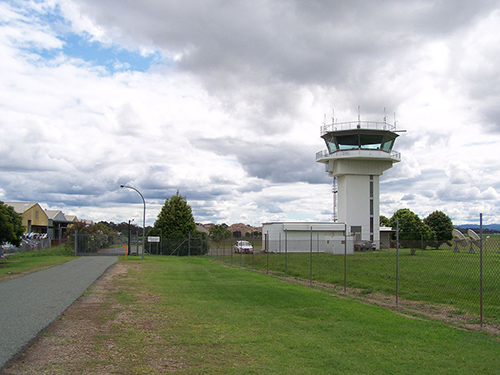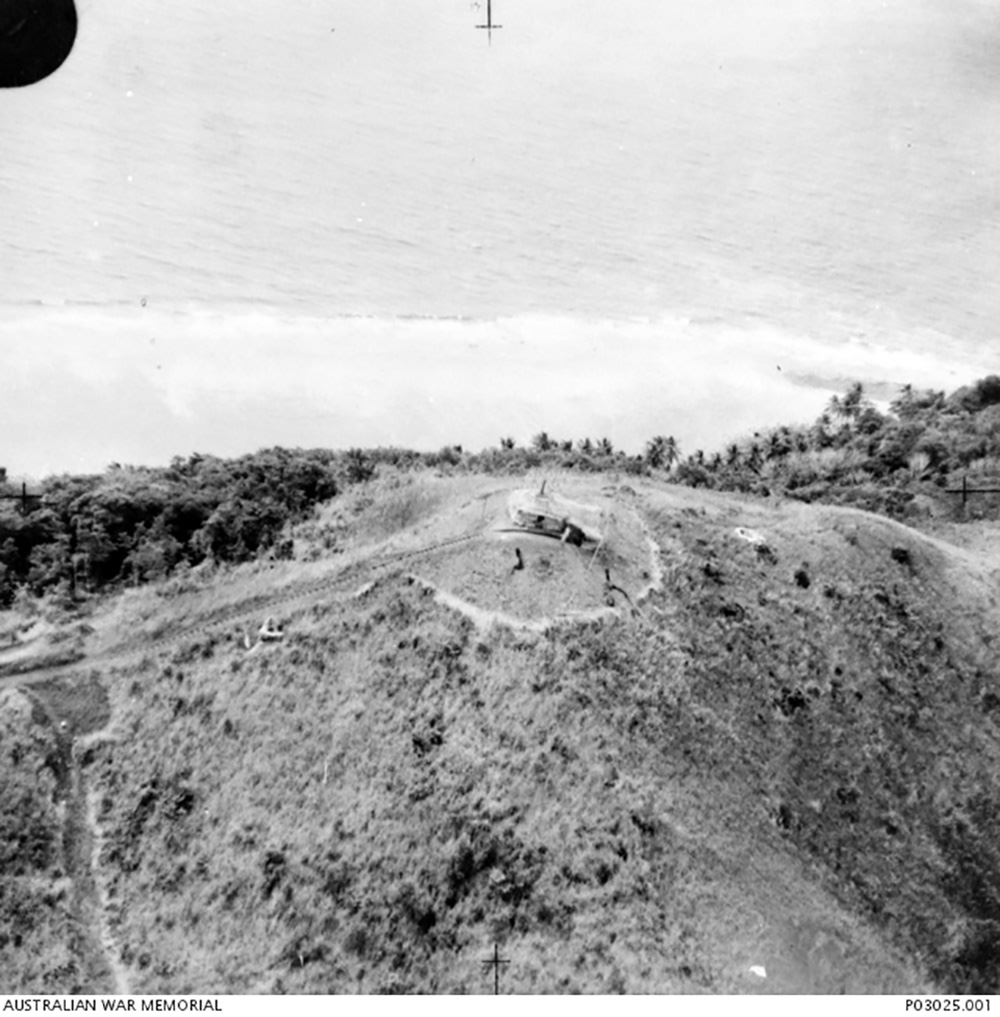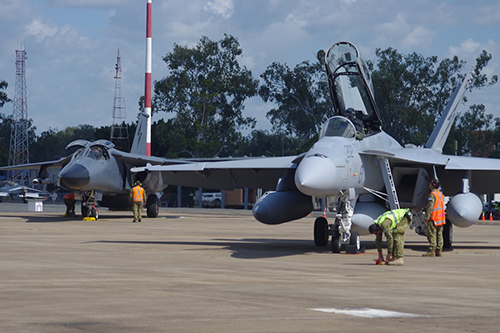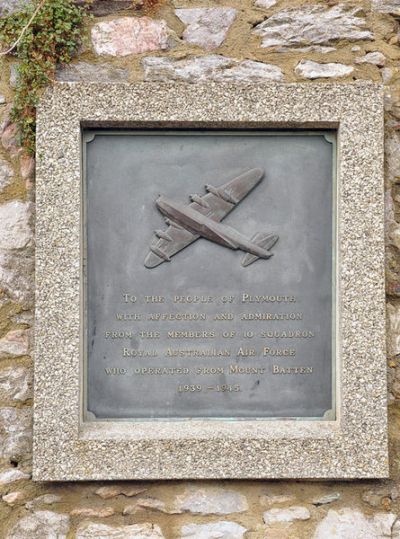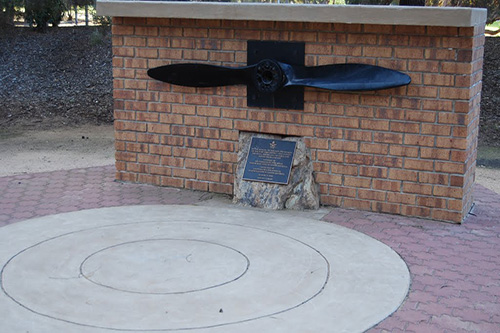Introduction
Shortly before the outbreak of the First World War, the Australian government established the Australian Aviation Corps. In 1914 the name was changed to Australian Flying Corps until it was separated from the Australian Army in the 1920s to form its own unit within the Australian Armed Forces. Through the Australian Air Corps (AAC), the Royal Australian Air Force (RAAF) was established in 1921.
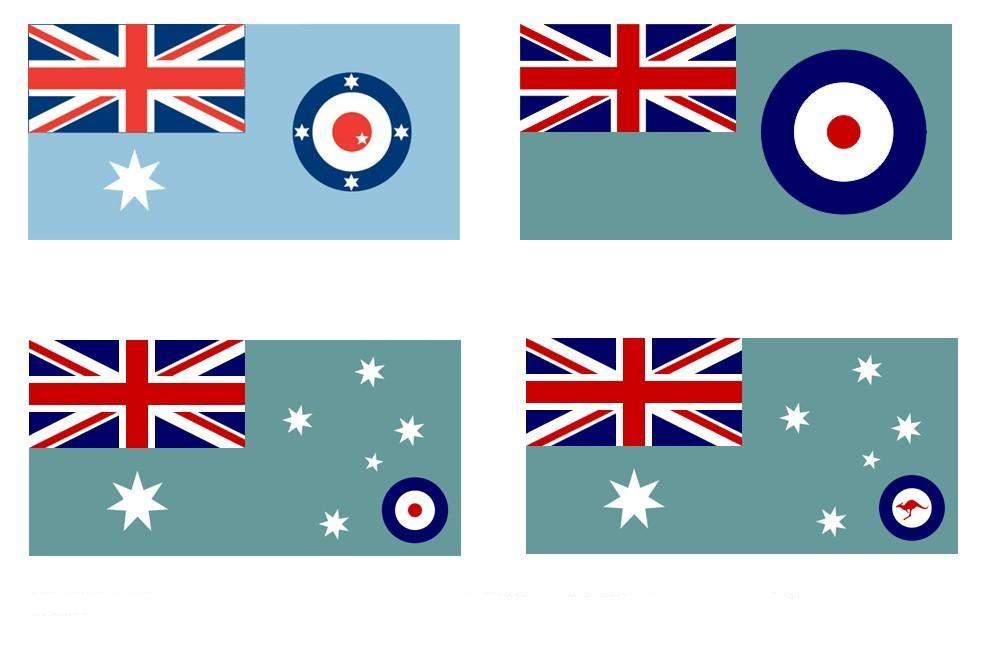
RAAF:1921 (top left), 1922 – 1948 (top right), 1948 – 1982 (bottom left), 1982 - present (bottom right). Source: Flags of the World
Definitielijst
- First World War
- Took place from 1914 till 1918 and is also named The Great War. The conflict started because of increased nationalism, militarism and neo-colonialism in Europe. Two alliances battled one another during the 4-year war, which after a dynamic start, resulted into static trench warfare. The belligerents were the Triple Alliance (consisting of Great-Britain, France, and Russia; later enlarged by Italy and the USA, amongst others) on the one hand and the Central Powers (consisting of Germany, Austria-Hungary, Bulgaria and the Ottoman empire) on the other hand. The war was characterized by the huge number of casualties and the use of many new weapons (flamethrowers, aircraft, poison gas, tanks). The war ended in 1918 when Germany and its allies surrendered unconditionally.
Australian Flying Corps (AFC)
On September 30, 1911, it was announced in the Commonwealth Gazette that the Australian Army was recruiting technicians and pilots. On July 3, 1912, two Royal Aircraft Factory B.E.2 and two Deperdussin aircraft were ordered. The first Australian pilots to be appointed were Henry Petre and Eric Harrison. On September 22, 1912, the Minister of Defence, George Pearce, formally approved the establishment of an air force branch of the Australian Army.
The organisation further evolved when it was decided to set up a Central Flying School at Point Cook, Victoria on October 22, 1912. A first squadron was raised on October 24 that same year. The Central Flying School (CFS) was formally established on March 7, 1913. During this period, it was still referred to as the Australian Aviation Corps. It was not until 1914 that the name Australian Flying Corps first appeared in military dispatches. Also in 1914, a first class of pilots was accepted into training and on July 14, 1914, the No. 1 Flight of the Australian Flying Corps was formally established.[1]
In March 1914, Major Edgar Reynolds was appointed as staff officer for military aviation within the General Staff. At the outbreak of the First World War, the Australian Flying Corps became a more independent army unit under the command of Reynolds. However, the operational units in the field were placed under the command of the various ground forces because aircraft were then mainly considered to be a support weapon.[2]
Australia's initial contribution to the air campaign at the start of the First World War was modest, sending one aircraft to New Guinea to support the conquest of several German colonies. However, before the aircraft could be deployed, the Germans had already surrendered. On May 27, 1915, the Mesopotamian Half Flight (MHF) became operational in Iraq under the command of Captain Henry Petre to provide air support to the Indian Army protecting British oil interests. Later that year the unit was transferred to No. 30 Squadron of the British Royal Flying Corps and was formally disbanded in December 1915.[3]
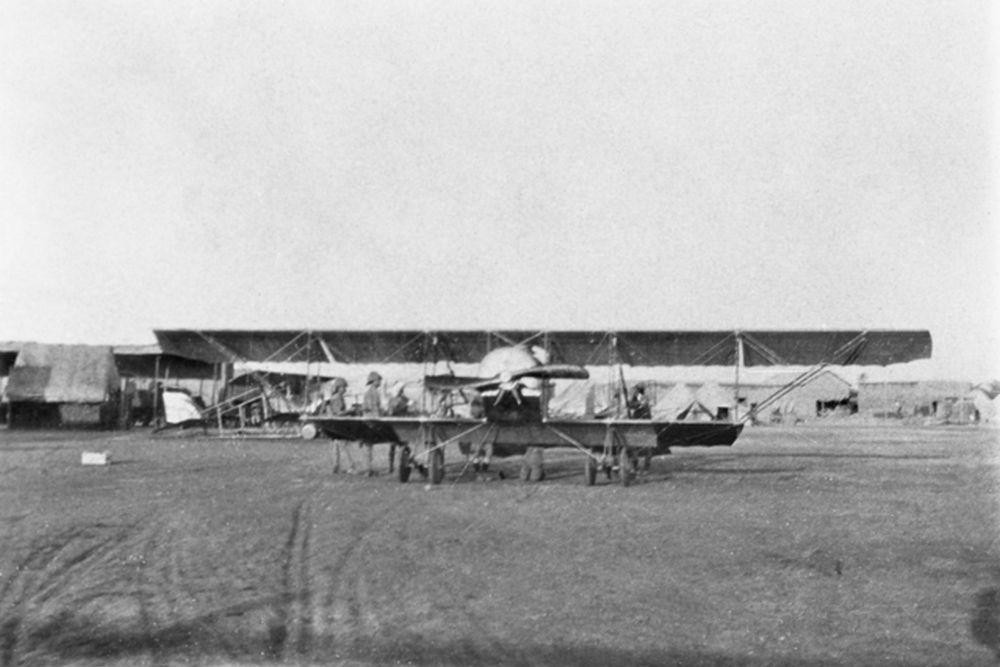
A Caudron aircraft of the Mesopotamian Half Flight (MHF) on July 19, 1915. Source: Australian War Memorial A02263
By the end of the First World War, the Australian Flying Corps (AFC) had four operational squadrons. As mentioned earlier, No. 1 Squadron AFC at No. 5 Wing, Royal Flying Corps and later at No. 40 Wing. No. 2 Squadron AFC was assigned to No. 51 Wing from where it was transferred to No. 80 Wing in 1918. No. 3 Squadron AFC was initially part of No. 23 Wing until 1917 when it became the Corps Squadron of the British XIII Army Corps and Canadian Corps. No. 4 Squadron AFC was initially part of No. 11 Wing but was also transferred to No. 80 Wing in 1918. Next to these operational units, the 1st Training Wing, Australian Flying Corps was established in the United Kingdom, consisting of No. 5 to No. 8 (Training) Squadrons. These units were again designated differently by the British. As the war progressed, it was decided that the Australian Flying Corps should ultimately consist of fifteen operational squadrons. However, once the war had ended this plan was abandoned.[7][8]
After the declaration of the armistice on November 11, 1918, only No. 4 Squadron AFC remained as part of the occupation force in Germany. The other units returned gradually to Australia. After March 1919, No. 4 Squadron also followed. In 1919, Reynolds was succeeded as commander by Colonel Richard Williams. From 1919 onwards, most units were slowly but surely disbanded. The Australian Flying Corps was succeeded by the Australian Air Corps in January 1920.[9]
Definitielijst
- Commonwealth
- Intergovernmental organisation of independent states in the former British Empire. A bomber crew could include an English pilot, a Welsh navigator, air gunners from Australia or New Zealand. There were also non-commonwealth Poles and Czechs in Bomber Command.
- First World War
- Took place from 1914 till 1918 and is also named The Great War. The conflict started because of increased nationalism, militarism and neo-colonialism in Europe. Two alliances battled one another during the 4-year war, which after a dynamic start, resulted into static trench warfare. The belligerents were the Triple Alliance (consisting of Great-Britain, France, and Russia; later enlarged by Italy and the USA, amongst others) on the one hand and the Central Powers (consisting of Germany, Austria-Hungary, Bulgaria and the Ottoman empire) on the other hand. The war was characterized by the huge number of casualties and the use of many new weapons (flamethrowers, aircraft, poison gas, tanks). The war ended in 1918 when Germany and its allies surrendered unconditionally.
- squadron
- A military unit in the Belgian navy usually six to eight small ships operating together under one command. The smallest military unit in the Dutch air force of about 350 men. In most countries is the designation of a military unit thesize of a company. It is either an independent unit, such as a battery, or part of a bigger Calvary unit. In the air force it is the designation of a unit of aircrafts.
Organisation Australian Flying Corps
| No. 1 Squadron, Australian
Flying Corps |
No. 67 (Australian) Squadron,
Royal Flying Corps |
January 1st, 1916 |
| No. 2 Squadron, Australian
Flying Corps |
No. 68 (Australian) Squadron,
Royal Flying Corps |
September 20th, 1916 |
| No. 3 Squadron, Australian
Flying Corps |
No. 69 (Australian) Squadron,
Royal Flying Corps |
September 19th, 1916 |
| No. 4 Squadron, Australian
Flying Corps |
No. 71 (Australian) Squadron,
Royal Flying Corps |
October 16th, 1916 |
| 1st Training Wing, Australian
Flying Corps |
||
| No.5 (Training) Squadron,
Australian Flying Corps |
No. 29 (Australian) Squadron,
Royal Flying Corps |
September 1st, 1917 |
| No.5 (Training) Squadron,
Australian Flying Corps |
No. 30 (Australian) Squadron,
Royal Flying Corps |
June 15th, 1917 |
| No.5 (Training) Squadron,
Australian Flying Corps |
No. 32 (Australian) Squadron,
Royal Flying Corps |
October 24th, 1917 |
| No.5 (Training) Squadron,
Australian Flying Corps |
No. 33 (Australian) Squadron,
Royal Flying Corps |
October 25th, 1917 |
Definitielijst
- Squadron
- A military unit in the Belgian navy usually six to eight small ships operating together under one command. The smallest military unit in the Dutch air force of about 350 men. In most countries is the designation of a military unit thesize of a company. It is either an independent unit, such as a battery, or part of a bigger Calvary unit. In the air force it is the designation of a unit of aircrafts.
Australian Air Corps
On 1 January 1920 the Australian Flying Corps was transformed into the Australian Air Corps (AAC), which unit remained part of the Australian Army. Command of the new unit was given to Major William Anderson. Due to sick leave, command was temporarily transferred to Major Rolf Brown until Anderson could assume his post on February 19. Because the Central Flying School (CFS) was the only unit of the AAC at that time, Anderson immediately became its commander with Point Cook as headquarters and the only air base.[10][11]
The AAC was intended as an interim unit until a definitive air force organisation was set up. This had already been decided in January 1919, but financial constraints delayed progress so that the General Staff decided in November 1919 that the AAC should ensure that the existing military air activities were continued. Due to objections from the navy that such activities were controlled by the army, it was decided to establish an aviation consultation body within which the army, navy and aviation were represented. This consultation group convened for the first time on January 29, 1920. On November 9, 1920, it was decided to establish a permanent Air Board, which was controlled by an Air Council. Both assumed supervision of the AAC from November 22 onwards.[12]
On March 15, 1921, it was announced that the AAC would be dissolved and that an air force branch would be established. The Australian Air Force was established on March 31 and formally became the Royal Australian Air Force in August.
Royal Australian Air Force (RAAF) until WW2
On March 31, 1921, the Australian Air Corps (AAC) was detached from the Australian Army and transformed into an independent military branch as the Australian Air Force. In May of the same year, King George V authorised the use of the prefix Royal and on August 13, 1921, the formal establishment of the Royal Australian Air Force (RAAF) took place.
At its inception, the RAAF had 21 officers, 128 men and 170 aircraft, organised into a single unit and centred on the Central Flying School (CFS). The objective was to establish six squadrons, divided into two fighter squadrons, two scout squadrons and two seaplane squadrons, with a total of 1,500 men. Due to budgetary constraints, these plans could not be implemented. Of the six planned squadrons, only five were formed, but these were so small that everything was combined under one mixed squadron.
When in 1925 the financial situation had slightly improved, No. 1 Squadron and No. 3 Squadron were re-established and composed of fighters and bombers in mixed units. Later No. 1 Squadron obtained bomber status and No. 3 Squadron would function as a ground support unit. In addition to these units, No. 1 Flying Training School was established at Point Cook, within which various operational units were established with fighter aircraft and seaplanes.With the increasing political and military threats in the 1930s, Australia also decided to expand its air force. Several new squadrons were formed and new bases established throughout Australia. By 1939, the RAAF consisted of approximately 3,500 airmen and twelve squadrons, with plans for the creation of a further six squadrons.
At the outbreak of the Second World War the RAAF had 246 aircraft. One squadron, No. 10 Squadron RAAF, operated in Great Britain and further squadrons were to be deployed to Europe. From that moment on, Australia also participated in the Empire Air Training Scheme, which meant that Australia was no longer responsible for training pilots itself but could make use of the expertise widely available within the British Empire. Ultimately, this would result in seventeen RAAF squadrons operating in Europe and the Mediterranean. At the start of the war in the Far East, Australia had four squadrons, all based in Malaysia: No. 1 Squadron, No. 8 Squadron, No. 21 Squadron and No. 453 Squadron. These units were destined to be the first to engage the Japanese attackers. The first battle in the airspace of Australia itself was fought by No. 12 Squadron and No. 13 Squadron during a Japanese attack on Darwin on February 19, 1942. Especially for the defence of Darwin, the British Air Ministry decided to deploy Australian No. 452 Squadron and No. 457 Squadron to Australia, accompanied by its own RAF No. 54 Squadron. A total of fifteen RAAF squadrons continued to fight in Europe.
Definitielijst
- RAF
- Royal Air Force. British air force
- squadron
- A military unit in the Belgian navy usually six to eight small ships operating together under one command. The smallest military unit in the Dutch air force of about 350 men. In most countries is the designation of a military unit thesize of a company. It is either an independent unit, such as a battery, or part of a bigger Calvary unit. In the air force it is the designation of a unit of aircrafts.
Royal Australian Air Force RAAF, December 1941
The Australian Air Force had three deployment areas during this period: Australia, RAF Middle East Command and RAF Far East Command. The number of units would expand very rapidly in subsequent years, especially in the Far East and Great Britain.
The following units were deployed in Australia itself in December 1941:
| No. 2 Squadron |
Wing Commander F Headlam Darwin, Australia Penofi, Timor |
8x Lockheed Hudson Mk II 4x Lockheed Hudson Mk II |
| No. 4 Squadron |
Squadron Leader BB Creswell Canberra, Australië |
12x Commonwealth Wirraway |
| No. 5 Squadron |
Squadron Leader AD Charlton Laverton, Australia |
12x Commonwealth Wirraway |
| No. 6 Squadron |
Squadron Leader RM Hampshite Richmond, Australia Laverton, Australia |
6x Lockheed Hudson Mk II 6x Lockheed Hudson Mk II |
| No. 9 Seaplane Squadron |
Wing Commander J Alexander Richmond, Australia On board the RAN cruisers |
5x Supermarine Seagull 6x Supermarine Seagull |
| No. 11 Seaplane Squadron |
Wing Commander JA Cohen Port Moresby, New Guinea |
6x Consolidated PBY Catalina |
| No. 12 Squadron |
Squadron Leader BR Walker Darwin, Australia |
12x Commonwealth Wirraway |
| No. 13 Squadron |
Wing Commander JP Ryland Darwin, Australia Laha, Ambon |
6x LockheedHudson Mk II 6x Lockheed Hudson Mk II |
| No. 14 Squadron |
Wing Commander IJ Lightfoot Pearce, Australia |
12x Lockheed Hudson Mk II |
| No. 20 Seaplane Squadron |
Wing Commander WN Gibson Port Morseby, New Guinea |
6x Consolidated PBY Catalina |
| No. 22 Squadron |
Squadron Leader JH Wright Richmond, Australia |
17x Commonwealth Wirraway 3x Lockheed Hudson Mk II |
| No. 23 Squadron |
Squadron Leader DW Kingwell Archerfield, Australia |
12x Commonwealth Wirraway 3x Lockheed Hudson Mk II |
| No. 24 Squadron |
Wing Commander Lerew Rabaul, New Britain |
12x Commonwealth Wirraway 4x Lockheed Hudson Mk II |
| No. 25 Squadron |
Squadron Leader DT Forsyth Pearce, Australia |
18x Commonwealth Wirraway |
The following units were placed under RAF Far East Command:
| No. 1 Squadron |
Wing Commander RH Davis Kota Bharu, Malaya |
10x Lockheed Hudson Mk II |
| No. 8 Squadron |
Wing Commander FN Wright Sembawang Kuantan |
4x Lockheed Hudson Mk II 8x Lockheed Hudson Mk II |
| No. 21 Squadron |
Squadron Leader WF Allshorn Sungei Patani |
12x Brewster Buffalo |
| No. 453 Squadron |
Flight Lieutenant TA Vigors Sembawang |
18x Brewster Buffalo 1x De Havilland Tiger Moth |
In the RAF Middle East Command also were to be found:
| No. 3 Squadron |
El Kubri, Egypt |
16x Curtiss P-40 Kittyhawk |
| No. 10 Squadron |
? | ? |
| No. 450 Squadron |
El Kubri, Egypt |
16x Curtiss P-40 Kittyhawk |
| No. 451 Squadron |
Rayak, Libanon |
Hawker Hurricane Mk I |
| No. 459 Squadron |
Egypt |
8x Lockheed Hudson Mk III |
Definitielijst
- Commonwealth
- Intergovernmental organisation of independent states in the former British Empire. A bomber crew could include an English pilot, a Welsh navigator, air gunners from Australia or New Zealand. There were also non-commonwealth Poles and Czechs in Bomber Command.
- RAF
- Royal Air Force. British air force
- Squadron
- A military unit in the Belgian navy usually six to eight small ships operating together under one command. The smallest military unit in the Dutch air force of about 350 men. In most countries is the designation of a military unit thesize of a company. It is either an independent unit, such as a battery, or part of a bigger Calvary unit. In the air force it is the designation of a unit of aircrafts.
RAAF, 1941-1945
Because of the American presence in the Pacific, the RAAF imported many aircraft from that country, such as the Curtiss P-40 Kittyhawk and the Consolidated B-24 Liberator, but it also imported British aircraft such as the Bristol Beaufighter. On top of that, Australia also produced its very own aircraft, such as the Commonwealth Boomerang and Commonwealth Wirraway. As of 1942, most Australian squadrons operated in the Far East as part of RAAF Command. Only the squadrons in New Guinea operated under the command of No. 9 Operational Group RAAF which was attached to the US Fifth Air Force.
After the Japanese conquest of the Dutch East Indies, several Dutch East Indies units also came under the command of the RAAF. These operational units were organised into squadrons such as No. 18 (NEI) Squadron and No. 120 (NEI) Squadron.
During the battle in the Far East, the RAAF was steadily modernised with new aircraft such as the North American P-51 Mustang and the Chance-Vought Corsair. By 1945, the First Tactical Air Force constituted the RAAF's main operational unit with 20 squadrons and 18,000 airmen. When the Second World War came to an end, 53 RAAF squadrons were operating in the Pacific and 17 in Europe. Comprising of 152,000 airmen and almost 6,000 aircraft, Australia was the fifth largest air force in the world at the time.
Notes
- Dennis,1995, pag. 67
- Molkentin, 2014, pag. 26-32
- Dennis,1995, pag. 67-68
- Dennis,1995, pag. 68-69
- Odgers 1995, pag. 112
- Molkentin, 2014, pag. 109
- Dennis,1995, pag. 68-69
- Molkentin, 2014, pag. 198-199259, 278
- Dennis,1995, pag. 69
- Sutherland, 2000, pag. 32-34
- Coulthard-Clark, 1991, pag. 17-21
- Coulthard-Clark, 1991, pag. 3-12, 17-18
Definitielijst
- Commonwealth
- Intergovernmental organisation of independent states in the former British Empire. A bomber crew could include an English pilot, a Welsh navigator, air gunners from Australia or New Zealand. There were also non-commonwealth Poles and Czechs in Bomber Command.
- Squadron
- A military unit in the Belgian navy usually six to eight small ships operating together under one command. The smallest military unit in the Dutch air force of about 350 men. In most countries is the designation of a military unit thesize of a company. It is either an independent unit, such as a battery, or part of a bigger Calvary unit. In the air force it is the designation of a unit of aircrafts.
Information
- Article by:
- Wilco Vermeer
- Translated by:
- Simon van der Meulen
- Published on:
- 14-02-2025
- Feedback?
- Send it!
Related sights
Related books
Sources
- COSTELLO, J., The Pacific War 1941 - 1945, Harper Perennial, 2009.
- COULTHARD-CLARK, C.D., The Third Brother, Allen & Unwin, 1991.
- DENNIS, P. e.a., The Oxford Companion to Australian Military History, Oxford University Press, 1995.
- ISAACS, K., Military Aircraft of Australia, 1909-1918, Australian War Memorial, 1971.
- MOLKENTIN, M., Australia and the War in the Air, Oxford University Press, 2014.
- ODGERS, G., Diggers: The Australian Army, Navy and Air Force in Eleven Wars from 1860 to 1994, Lansdowne, 1995.
- SUTHERLAND, B., Command and Leadership in War and Peace, 1914-1975, Air Power Studies Centre, 2000.
